- Home
- H. P. Lovecraft
The New Annotated H. P. Lovecraft
The New Annotated H. P. Lovecraft Read online
TO HOWARD PHILLIPS LOVECRAFT
“I am Providence.”
Contents
Introduction by Alan Moore
Foreword
Editor’s Note
THE STORIES
Dagon
The Statement of Randolph Carter
Beyond the Wall of Sleep
Nyarlathotep
The Picture in the House
Herbert West: Reanimator
The Nameless City
The Hound
The Festival
The Unnamable
The Call of Cthulhu
The Silver Key
The Case of Charles Dexter Ward
The Colour Out of Space
The Dunwich Horror
The Whisperer in Darkness
At the Mountains of Madness
The Shadow over Innsmouth
The Dreams in the Witch House
The Thing on the Doorstep
The Shadow Out of Time
The Haunter of the Dark
ADDITIONAL MATERIAL
Appendix 1: Chronological Table
Appendix 2: Faculty of Miskatonic University
Appendix 3: History of the Necronomicon
Appendix 4: Genealogy of the Elder Races
Appendix 5: The Works of H. P. Lovecraft
Appendix 6: The “Revisions” of H. P. Lovecraft
Appendix 7: H. P. Lovecraft in Popular Culture
Bibliography
Acknowledgements
Introduction
by Alan Moore
With an increasing distance from the twentieth century and concomitant broadening of cultural perspective, the New England poet, author, essayist, and stunningly profuse epistoler Howard Phillips Lovecraft is beginning to emerge as one of that tumultuous period’s most critically fascinating and yet enigmatic figures. Lovecraft is intriguing for not only the rich substrate of astonishing and sometimes prescient ideas that is the bedrock of his work, but for the sheer unlikelihood of his ascent into the ranks of the respected U.S. literary canon: Progeny of mentally ill parents and product of an estranging cloistered upbringing, he wrote a scant few dozen short tales and some longer pieces that were published only in sensational and stigmatized pulp magazines during his lifetime, if indeed they were published at all. After his 1937 death, the earliest mainstream response was typified by critic Edmund Wilson’s withering dismissal, and even those parties most responsible for keeping Lovecraft’s name alive would often only do so by (perhaps unwittingly) misrepresenting Lovecraft’s fiction, his philosophy, and his essential nature as a human being. Furthermore, acceptance of his output as substantial literature has undeniably been hindered by his problematic stance on most contemporary issues, with his racism, alleged misogyny, class prejudice, dislike of homosexuality, and anti-Semitism needing to be both acknowledged and addressed before a serious appraisal of his work could be commenced. Such is the mesmerizing power of Lovecraft’s language and imagination that despite these obstacles he is today revered to a degree comparable with that of his formative idol Edgar Allan Poe, a posthumous trajectory from pulp to academia that is perhaps unique in modern letters.
As for Lovecraft’s status as enigma, while this is implied by the perpetually expanding sphere of critical attention that attempts to penetrate his complex worldview and unusual persona, surely the real mystery lies in our continuing capacity to find him and his work mysterious. He lived for only forty-six years during an unusually well-documented period of recent history and in addition saw fit to record his daily doings, thoughts, and observations for the greater part of that short lifespan in a multitude of letters, possibly a hundred thousand such, according to some estimates, some running to extraordinary lengths and a great many of them archived or preserved in print. With even the minutiae of his dreams available; with structuralist, poststructuralist, and psychological analyses of his most juvenile or marginal material proliferating by the day, how can there be a molecule of H. P. Lovecraft’s world or circumstance or psyche that remains to be examined? What is the source of our enduring curiosity regarding this unworldly and aggressively old-fashioned individual?
Born in 1890, with his first great rush of literary productivity occurring in the roaring, emblematic year of 1920, Lovecraft came of age in an America yet to cohere as a society, much less as an emergent global superpower, and still beset by a wide plethora of terrors and anxieties. The twenty years since the beginning of the century had seen the largest influx of migrants and refugees that the immigrant-founded nation had heretofore experienced, bringing with them fears that the established European settler stock might soon be overwhelmed by sprawling foreign populations or diluted by pernicious interbreeding and miscegenation. On the streets of Harlem, Greenwich Village, Times Square, and the Bowery in New York, a novel populace of highly visible and unapologetically flamboyant homosexual men (and women, albeit less noticeably) were establishing themselves, much to the consternation of the city’s moral arbiters. This was the year when women’s suffrage would be finally achieved—a period of industrial unrest and widespread strikes that seemed all the more worrying in the wake of Russia’s only recently concluded revolution. All of these prevailing fears, afflicting an extremely broad swath of conventional American society, would find expression in the writing and the ideology of H. P. Lovecraft. However, Lovecraft’s intellect and omnivorous reading habits meant that he was capable of understanding and experiencing a still wider spectrum of unease than the beleaguered average citizen. Contemporaneous advances in humanity’s expanding comprehension of the universe with its immeasurable distances and its indifferent random processes had redefined, dramatically, mankind’s position in the cosmos. Far from being the whole point and purpose of creation, human life became a motiveless and accidental outbreak on a vanishingly tiny fleck of matter situated in the furthest corner of a stupefying swarm of stars, itself but one of many such swarms strewn in incoherent disarray across black vastness inconceivable. These possibly more rarefied yet more unsettling and fundamental phobias would also be articulated in the work of the Rhode Island visionary, as his pantheon of mindless or chaotic cosmic powers or in his much-loved everyday New England landscape altered and infected by conceptions from beyond.
In this light, it is possible to perceive Howard Lovecraft as an almost unbearably sensitive barometer of American dread. Far from outlandish eccentricities, the fears that generated Lovecraft’s stories and opinions were precisely those of the white, middle-class, heterosexual, Protestant-descended males who were most threatened by the shifting power relationships and values of the modern world. Though he may have regarded himself, in accordance with the view held of him by his readership and even those that knew him personally, as an embodiment of his most emblematic fable, “The Outsider,” in his frights and panics he reveals himself as that almost unheard-of fluke statistical phenomenon, the absolutely average man, an entrenched social insider unnerved by new and alien influences from without. This, it might be suggested, is the underlying reason for our ongoing absorption in his work, a fascination that seems only to increase as Lovecraft and his times recede into the past: In H. P. Lovecraft’s tales, we are afforded an oblique and yet unsettlingly perceptive view into the haunted origins of the fraught modern world and its attendant mind-set that we presently inhabit. Coded in an alphabet of monsters, Lovecraft’s writings offer a potential key to understanding our current dilemma, although crucial to this is that they are understood in the full context of the place and times from which they blossomed.
This, by a circuitous route, brings us to Leslie S. Klinger’s The New Annotated H. P. Lovecraft. In the previously mentioned rapidly dilating
sphere of Lovecraft scholarship, it would appear that Mr. Klinger has succeeded admirably in the unenviable effort of appending Lovecraft’s oeuvre in a manner that is not redundant or repetitive, but rather complementary to the body of existing commentary. Even more notably, the welcome strategy of focusing upon the sociohistoric references in Lovecraft’s narratives—casually mentioned items or events the full import of which might easily escape the reader of today—allows us to locate this hard-to-categorize author in the context of the era that engendered him, assisted by the text’s profusion of illuminating photographic reference. If, as maintained above, an understanding of his fiction is not possible without consideration of the societal landscape that surrounded him, such an approach is surely necessary.
In addition to this careful referencing of the gentleman from Providence’s times and circumstances, Mr. Klinger understands the need to study Lovecraft’s work through the variety of fine-ground lenses that are now available to us by way of modern Lovecraft criticism. To this end, besides its clarifying commentary on the narratives included here, in The New Annotated H. P. Lovecraft we are offered a wide sampling of the latest literary theory as pertaining to the writer and his endlessly engrossing world of fiction. In effect, the reader is permitted to explore even the most familiar story in a new way, the dense prose and myriad associations skilfully unpacked to conjure details of a bygone artifact or attitude, the differing critical perceptions proffering an opportunity to view the same tales and same words from multiple perspectives. Given the intensity of thought, originality, and effort behind even Lovecraft’s simplest pieces, it is perhaps unsurprising that there turned out to be so much to unpack, and yet this only makes what Leslie Klinger has accomplished more impressive.
Painfully acute, Howard Phillips Lovecraft flourished in the two decades between world wars and wrote of his disquiet at what he saw as the most likely future, with the species overwhelmed by its own exponentially accumulating knowledge of itself and of the vast and alien universe about it, fleeing to the reassuring shadow of a new Dark Ages. As our world increasingly comes to resemble Lovecraft’s anxious speculations, the importance of this long-neglected pulp purveyor of the weird and the unnameable becomes more evident, more unmistakable. In his attempts to ground the awesome realms of cosmic speculation in the soil and streets and gambrel roofs of his immediate locality, there may conceivably exist a key to many of our present psychosocial dilemmas, although finding this depends on our ability to view both the man and his environment in the round. In The New Annotated H. P. Lovecraft, Leslie Klinger has compiled what may be our best means to date of doing so. Acknowledging the exemplary biographical and critical advances made by Messrs. Joshi, Cannon, Waugh, and their confederates, this volume correlates their insights into its richly presented tapestry of Lovecraft’s best New England stories and, perhaps even more importantly, into the almost-lost America of the last century, in which those stories were created. Whether for that lucky reader venturing into the tempting undergrowth of Lovecraft’s prose for the first time or the more seasoned Elder God enthusiast, this necessary volume guarantees new insights and a new experience of possibly the most important author of weird fiction that the world has ever seen. An eldritch triumph.
Foreword
by Leslie S. Klinger
. . . engulfed in the infinite immensity of spaces whereof I know nothing, and which know nothing of me, I am terrified. The eternal silence of these infinite spaces fills me with dread.
—BLAISE PASCAL1
It is man’s relation to the cosmos—to the unknown—which alone arouses in me the spark of creative imagination. . . .
—H. P. LOVECRAFT2
The American author Joyce Carol Oates describes two writers as having “had an incalculable influence on succeeding generations of writers of horror fiction.”3 One is Edgar Allan Poe, who achieved only moderate success during his lifetime and died in 1849, virtually penniless, at age forty. The other is Howard Phillips Lovecraft (1890–1937), whose stories appeared primarily in the “pulp” magazines, known only to the cult of their readers, with only one published in book form before his death. Poe is now credited with inventing the detective tale as well as with perfecting the gothic story; Lovecraft fused the gothic story with science and a realism never before attempted. Yet Poe is renowned, read by virtually every schoolchild, while Lovecraft until recently was poorly known except to readers and students of the fantastic.
WHAT CAME BEFORE
HORROR HAS BEEN part of oral and recorded stories of humanity from the beginning.4 Stories designed to elucidate the mysterious worlds of dreams, explain the supernatural, and assuage humans’ fear of pain and death have a prominent place in literature. Homer’s epic poem The Odyssey, for example, records Odysseus’s confrontations with several witches, including Circe. Ancient Greek myths tell the story of Queen Lamia, who was turned by Zeus’s wife, Hera, into a child-eating monster. In later versions, Greek writers depict various forms of vampires, chiefly the cunning and murderous lamiae. Phlegon of Tralles (ca. 117–138 CE) wrote in his Book of Marvels of Philinium, a woman who returns from the grave to sleep with a young man, Machates.5 Originally a demigoddess, Empusa, reincarnated as a shape-shifting monster or specter, appears—in guises ranging from a bull to a beautiful young woman to a figure of indeterminate origin, one of whose legs is made of excrement—in Aristophanes’ comic play The Frogs (ca. 405 BCE), set in Hades. Flavius Philostratus’s Life of Apollonius of Tyana (ca. 200 CE) tells of a near-fatal relationship involving Menippus, a handsome youth who falls in love with the apparition of a “Phoenician woman.” When challenged, the phantom confesses that she is a vampire.
Fascination with the supernatural can be found in Judeo-Christian sources as well as in pagan myths and literature. The Old Testament (1 Samuel 28:3–25) records Saul’s consultation with the Witch of Endor, a medium who calls up a spirit whom Saul identifies as the prophet Samuel. The Roman satirist and philosopher Lucius Apuleius, in The Golden Ass* (translated into English in 1566), tells of a narrator, absorbed by magic, who meets or learns of witches, sorcerers, and a vampiric creature. The Norse Eddas and early Anglo-Saxon works like Beowulf are filled with horrific tales of monsters and shape-shifting men (werebeasts). Chaucer and Shakespeare knew the prevailing traditions of the supernatural, and their works include tales of tregetours (illusionists), ghosts, fiends, enchantresses, and witches, as does Malory’s Morte d’Arthur (still studied at universities) and the plays of Marlowe and Webster, both of whom gave major roles to the devil.
The Renaissance polymath Niccolò Machiavelli wrote a novel-length story about an archdemon called Belphagor (or Belfagor). In the late seventeenth century and early eighteenth century, the popular English writer Daniel Defoe, best known for Robinson Crusoe, penned a number of stories that are today classed as horror tales.
However, stories of horror as we know them emerged in the late eighteenth century. Horace Walpole’s Castle of Otranto* (1764) initiated the genre that became known as the gothic horror or gothic romance. Walpole sought to bring together medieval notions of the supernatural and the realism of the contemporary novel. Above all, he aimed to create an atmosphere of terror, a world in which the totally unexpected could happen: A giant helmet falls from the heavens, crushing Conrad, the infirm son of the book’s villain, Manfred, on his wedding day; immense limbs appear within the castle itself; mysterious blood flows; and a hodgepodge of bogeymen wander in and out of the tale.
The immense success of Walpole’s novel, which he wrote under a pseudonym and passed off as drawn from historical records, led to others exploring the genre. In 1777, Clara Reeve published an anonymous work originally titled The Champion of Virtue;* it was retitled The Old English Baron in 1778. The author shamelessly termed it the “literary offspring” of Otranto, and the public embraced it with the same fervor as it had Walpole’s melodrama. Although it was similar in style to Otranto, Reeve attempted to inject more realism, avoiding some of the absurditi
es of Walpole.
The work of the better-known Ann Radcliffe combined romantic descriptions of place, love stories, and inexplicable gothic terrors and was immensely popular through most of the nineteenth century. Radcliffe’s six novels, most notably The Mysteries of Udolpho* (1794)—parodied brilliantly by Jane Austen in Northanger Abbey (published in 1817, although likely written in the period from 1798 to 1799)—all focused on young heroines confronted with mysterious castles and even more mysterious nobles. Matthew Gregory Lewis’s The Monk* (1796), of which Coleridge famously remarked that “if a parent saw [it] in the hands of a son or daughter, he might reasonably turn pale,”6 is said to have provided, in the physical description of Ambrosio, the titular monk, the basis for Bram Stoker’s Count Dracula. An admirer of the work of Ann Radcliffe, Sir Walter Scott* included many horrific folktales, notably the portion of Redgauntlet known as “Wandering Willie’s Tale,” or “The Feast of Redgauntlet” (1824), in his immense output in the early years of the nineteenth century.
Title page from The Castle of Otranto by Horace Walpole, showing the fictional author Onuphrio Muralto and Walpole’s pseudonym Walter Marshal.
Nor was the newly founded American nation a stranger to horror literature. Washington Irving penned tales focusing on regional supernatural phenomena,* among them “The Legend of Sleepy Hollow” and “Rip Van Winkle” (both appearing in 1820). Although his psychological tales of New England are the works that brought him fame, Nathaniel Hawthorne was also fascinated by strange stories, and among his numerous tales of the occult, both “Dr. Heidegger’s Experiment”* (1837) and the posthumously published Septimius Felton, or The Elixir of Life (1871) reflect the author’s fascination with the search for immortality.
The gothic novel, or romance, was not limited to English-speaking countries. The French roman noir (black novel) and the German Schauerroman (literally, “shudder-novel”) thrived in their respective nations. The bizarre tales of German writer E. T. A. Hoffmann and Polish nobleman and occultist Jan Potocki were also a part of the tradition, reflected earlier in the horrific tales drawn from folklore collected by the Brothers Grimm and first published in 1812. In general, the work of these continental cousins was generally more violent than that of their English counterparts.

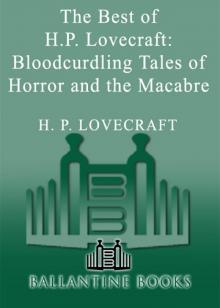 The Best of H.P. Lovecraft
The Best of H.P. Lovecraft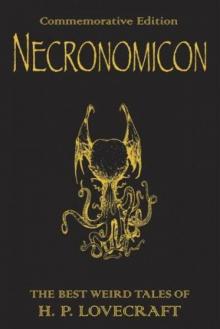 The Definitive H.P. Lovecraft: 67 Tales Of Horror In One Volume
The Definitive H.P. Lovecraft: 67 Tales Of Horror In One Volume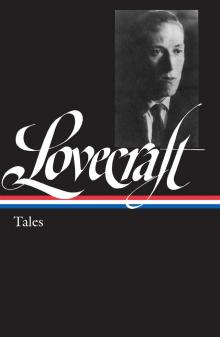 The Complete Works of H.P. Lovecraft
The Complete Works of H.P. Lovecraft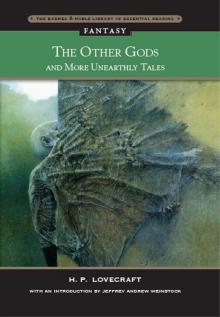 Other Gods and More Unearthly Tales
Other Gods and More Unearthly Tales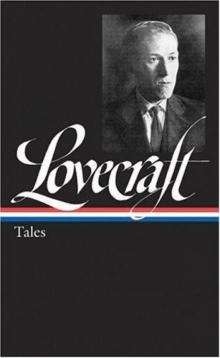 Lovecraft's Fiction Volume I, 1905-1925
Lovecraft's Fiction Volume I, 1905-1925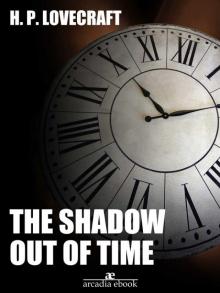 The Shadow Out of Time
The Shadow Out of Time The Shunned House
The Shunned House Lovecraft's Fiction Volume II, 1926-1928
Lovecraft's Fiction Volume II, 1926-1928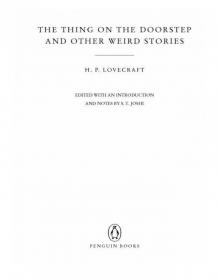 The Thing on the Doorstep and Other Weird Stories
The Thing on the Doorstep and Other Weird Stories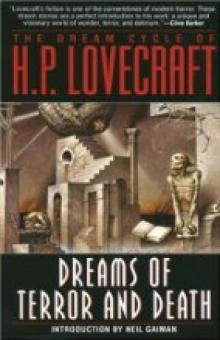 Dream Cycle of H. P. Lovecraft: Dreams of Terror and Death
Dream Cycle of H. P. Lovecraft: Dreams of Terror and Death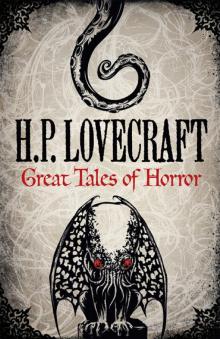 Great Tales of Horror
Great Tales of Horror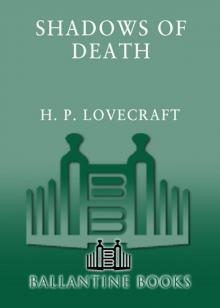 Shadows of Death
Shadows of Death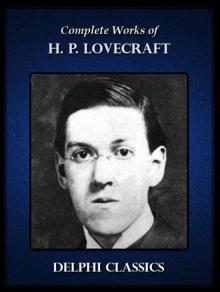 Delphi Complete Works of H. P. Lovecraft (Illustrated)
Delphi Complete Works of H. P. Lovecraft (Illustrated)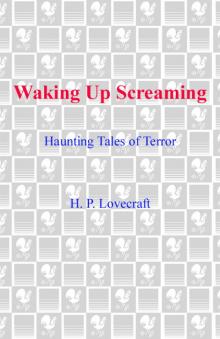 Waking Up Screaming: Haunting Tales of Terror
Waking Up Screaming: Haunting Tales of Terror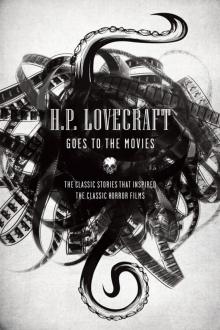 H.P. Lovecraft Goes to the Movies
H.P. Lovecraft Goes to the Movies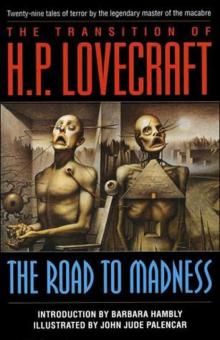 The Road to Madness
The Road to Madness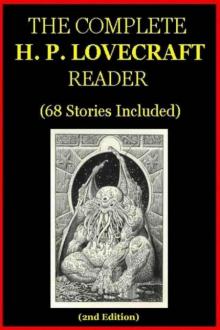 The Complete H.P. Lovecraft Reader (68 Stories)
The Complete H.P. Lovecraft Reader (68 Stories)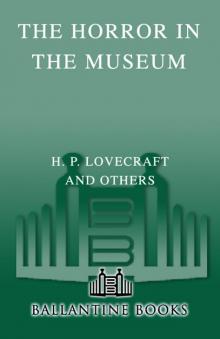 The Horror in the Museum
The Horror in the Museum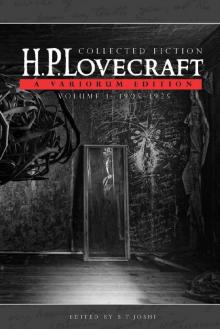 Collected Fiction Volume 1 (1905-1925): A Variorum Edition
Collected Fiction Volume 1 (1905-1925): A Variorum Edition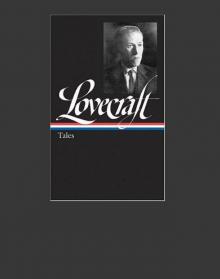 Lovecrafts_Fiction, vol.I_1905-1925
Lovecrafts_Fiction, vol.I_1905-1925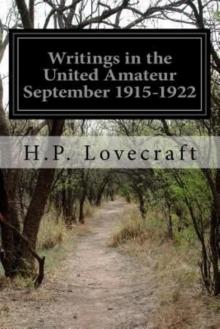 Writings in the United Amateur, 1915-1922
Writings in the United Amateur, 1915-1922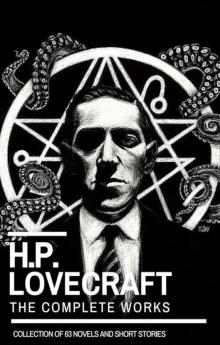 H.P. Lovecraft: The Complete Works
H.P. Lovecraft: The Complete Works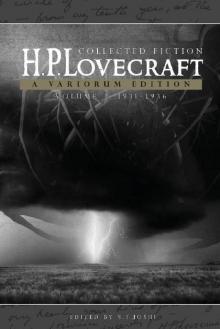 Collected Fiction Volume 3 (1931-1936): A Variorum Edition
Collected Fiction Volume 3 (1931-1936): A Variorum Edition H.P. Lovecraft: The Complete Fiction
H.P. Lovecraft: The Complete Fiction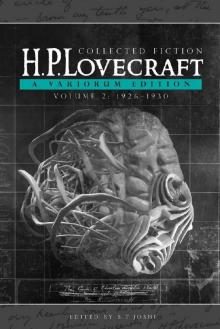 Collected Fiction Volume 2 (1926-1930): A Variorum Edition
Collected Fiction Volume 2 (1926-1930): A Variorum Edition Yog Sothothery - The Definitive H.P. Lovecraft Anthology
Yog Sothothery - The Definitive H.P. Lovecraft Anthology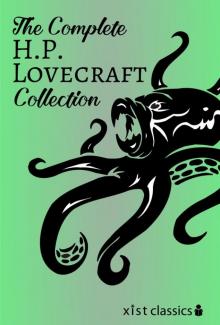 The Complete H.P. Lovecraft Collection (Xist Classics)
The Complete H.P. Lovecraft Collection (Xist Classics)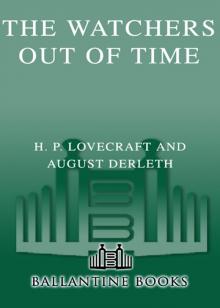 The Watchers Out of Time
The Watchers Out of Time Eldritch Tales
Eldritch Tales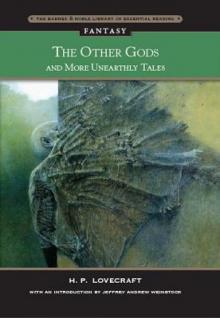 The Other Gods And More Unearthly Tales
The Other Gods And More Unearthly Tales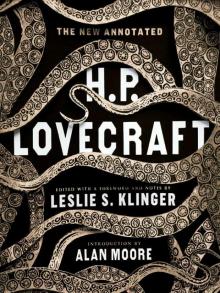 The New Annotated H. P. Lovecraft
The New Annotated H. P. Lovecraft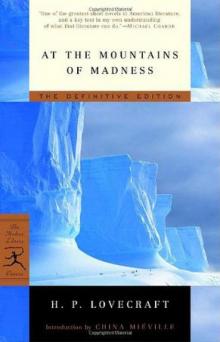 At the mountains of madness
At the mountains of madness Bloodcurdling Tales of Horror and the Macabre
Bloodcurdling Tales of Horror and the Macabre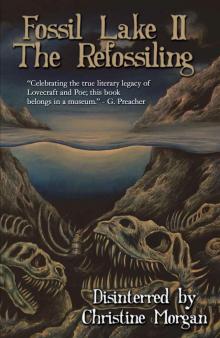 Fossil Lake II: The Refossiling
Fossil Lake II: The Refossiling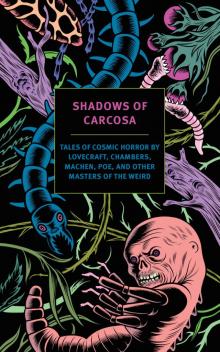 Shadows of Carcosa: Tales of Cosmic Horror by Lovecraft, Chambers, Machen, Poe, and Other Masters of the Weird
Shadows of Carcosa: Tales of Cosmic Horror by Lovecraft, Chambers, Machen, Poe, and Other Masters of the Weird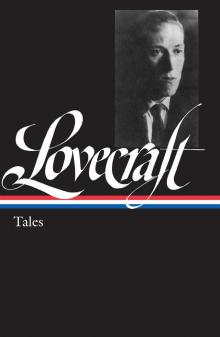 H. P. Lovecraft
H. P. Lovecraft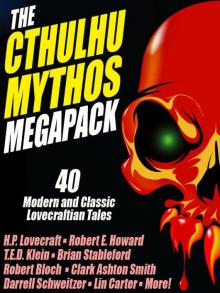 The Cthulhu Mythos Megapack
The Cthulhu Mythos Megapack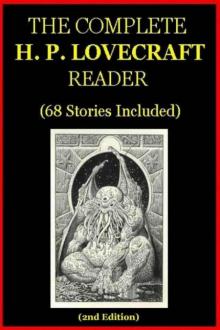 The Complete H. P. Lovecraft Reader (2nd Edition)
The Complete H. P. Lovecraft Reader (2nd Edition)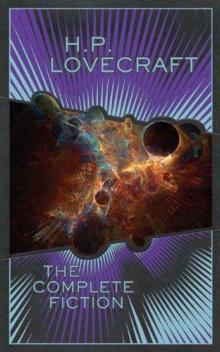 The Complete Fiction
The Complete Fiction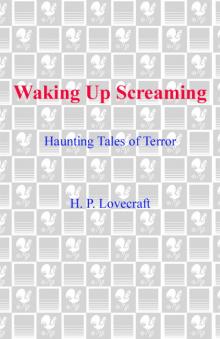 Waking Up Screaming
Waking Up Screaming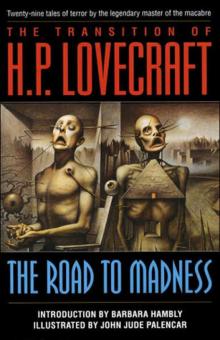 Transition of H. P. Lovecraft
Transition of H. P. Lovecraft![[1935] The Shadow Out of Time Read online](http://i1.bookreadfree.com/i2/04/12/1935_the_shadow_out_of_time_preview.jpg) [1935] The Shadow Out of Time
[1935] The Shadow Out of Time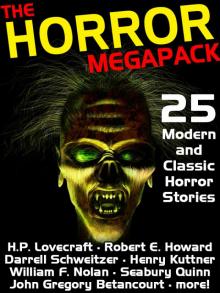 The Horror Megapack
The Horror Megapack